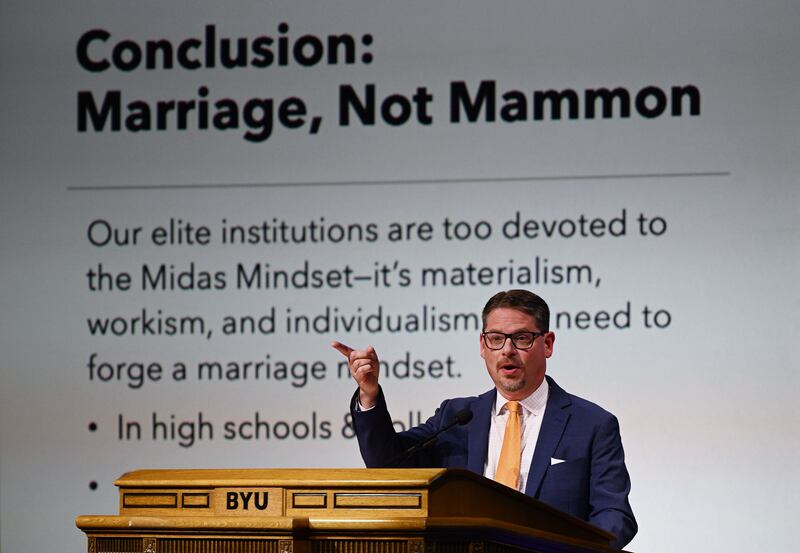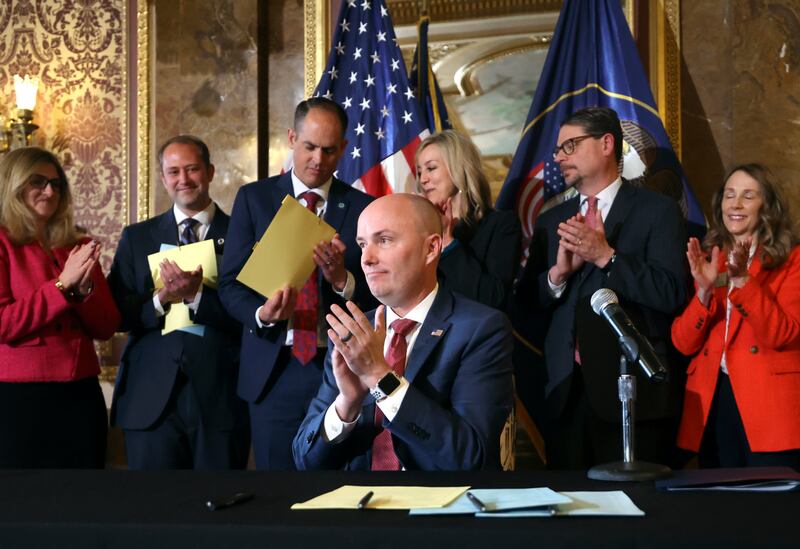I’ve written before about the “Utah Family Miracle,” referencing the fact that no state in America has more families headed by married parents than the Beehive State:
“In 2021, 55% of adults in Utah (ages 18-55) were married and 82% of its children were living in married-couple families. This compares to a national average of 45% of adults married and 75% of kids living in married families.”
The strength of Utah’s families matters because this Beehive distinctive helps explain why the state is rated No. 1 when it comes to economic growth, economic mobility for poor children, and happiness, according to many observers. Strong families make for greater prosperity and more happiness, on average, at both the individual and collective levels.
But the “historically strong picture for family formation in Utah shows some clouds on the horizon.” The state’s marriage and fertility rates are falling. For instance, as I recently noted in the Deseret News with Patrick Brown and Jenet Erickson, “In 2012, 82 out of every 1,000 never-married males over age 15 and 95 out of every 1,000 females in Utah would tie the knot. In 2021, those rates were down to 63 males and 77 females getting married per 1,000,” with the decline strongest in the Salt Lake area and more muted in Utah County.

These clouds on Utah’s horizon are partly why I continue to return to Salt Lake City. I aim to do my part to help the state retain its status as the No. 1 state for families in America.
I will be speaking Friday morning at the American Heritage School in downtown Salt Lake City to students, the public and community leaders on “How and Why Marriage Matters for Children’s Well-Being Today.” I will also be meeting with state legislators and educators to talk about a range of new policy ideas advanced by the Sutherland Institute that are designed to strengthen families — from incorporating the “success sequence” into public school curricula to developing new measures to reduce the costs of raising a family to spotlighting family structure data in state agencies (to give citizens and leaders a better understanding of how families matter).

A little more than a year ago, I was invited by Gov. Spencer Cox to Salt Lake City to think with him about tackling one of Utah families’ most pressing problems: teens and tech. He was aware of research spotlighting the risks of platforms like Instagram and TikTok for adolescents — like data showing that depression has more than doubled, from 12% in 2010 to 26% today for teen girls, largely because of social media — and the difficulties many parents across the state were facing in superintending their kids’ use of smartphones.
I flew into Salt Lake City a year ago to talk to Cox, Aimee Newton (director of the Utah Office of Families), civic leaders and members of the state legislature about protecting teens from Big Tech. At a symposium dedicated to the issue, we went beyond bemoaning smartphones to identify real strategies the state might advance to help families navigate today’s technological challenges with their teens, based in large part on research conducted by colleagues at the Institute for Family Studies and the Ethics and Public Policy Center.
The result of this meeting: a first-in-the-nation set of laws passed last spring that requires social media platforms to verify the age of users, keeps kids off those platforms who don’t have parental permission, protects them from algorithms designed to glue them to their screens, and sets a curfew that blocks children from accessing social media overnight.
Many of these measures will go into effect this spring, assuming the state can overcome a legal challenge from the tech lobby, NetChoice. Not only did Utah’s pioneering legislation get the attention of the national media — from NPR to The New York Times — it led other states across the nation, from Arkansas to Texas, to also take legislative steps to reign in Big Tech and protect teens. And under Cox’s leadership, Utah has also launched a social marketing campaign — relying on billboards and social media ads of its own — to highlight the dangers of social media and encourage better tech use on the part of teens and families across the state. We hope efforts like this will reduce the time that Utah teens devote to their screens, boost their emotional well-being and strengthen opportunities for families to spend time together.
Efforts like these are particularly valuable because they are designed to reinforce Utah’s status as the No. 1 state for families.
Obviously, to keep family life and marriage strong in the Beehive State, much more will be required than new public policies. But if Utah wants to keep its status as the state with the strongest families, she will have to find new ways to inform her citizens of its benefits and also make this most important social institution, marriage, attractive and attainable to the men and women of the Beehive State.
Which is why I am back in town.
Brad Wilcox is professor of sociology and director of the National Marriage Project at the University of Virginia, a fellow at the Institute for Family Studies and the American Enterprise Institute, and the author of “Get Married: Why Americans Must Defy the Elites, Forge Strong Families, and Save Civilization,” out from Harper Collins next month.


